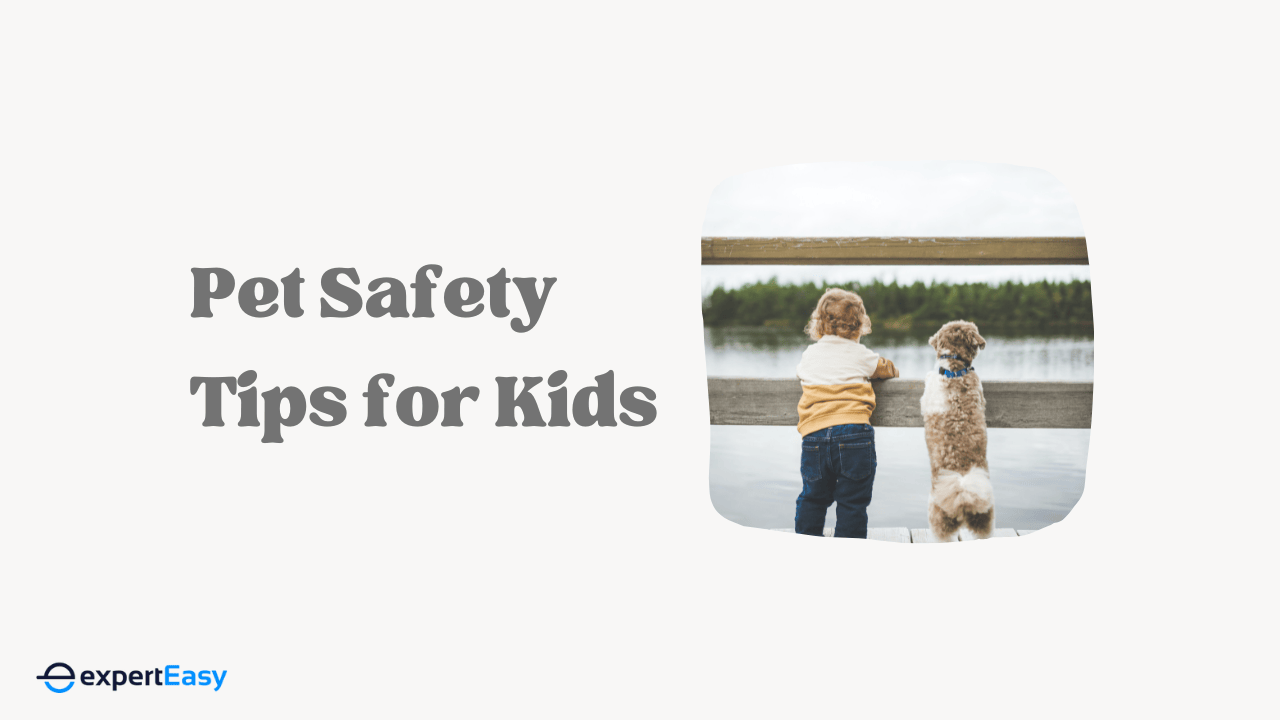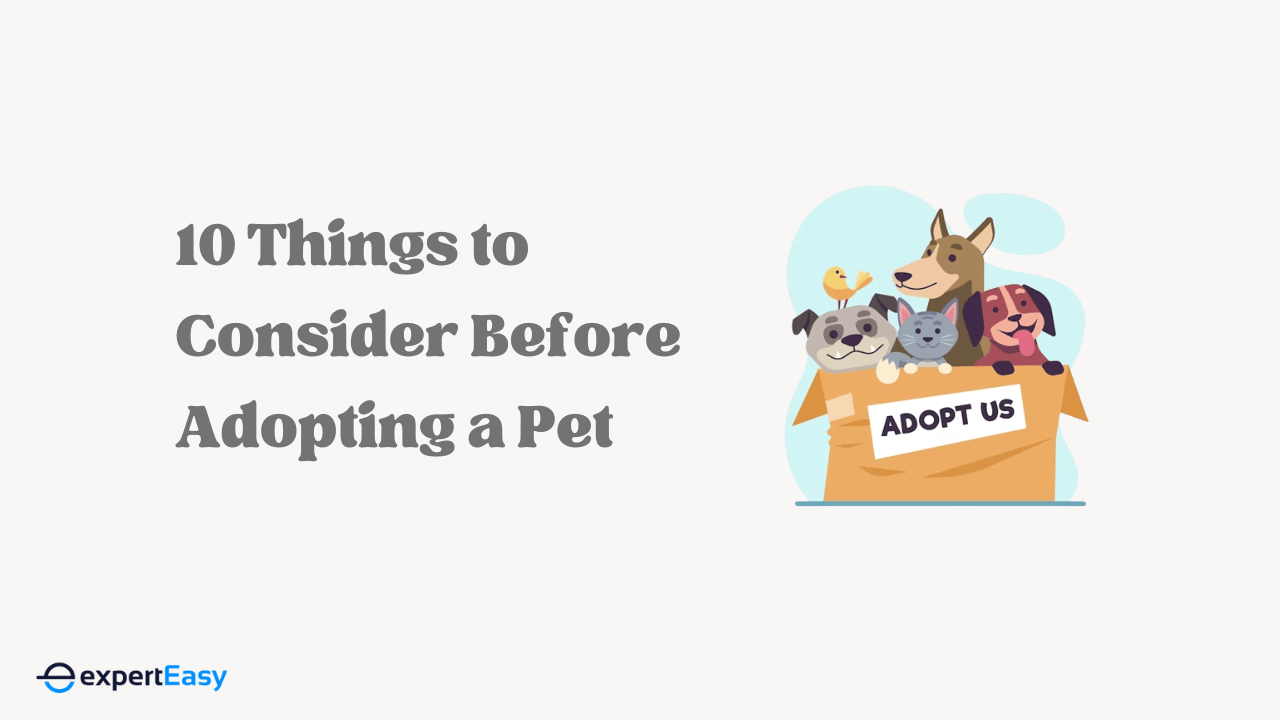As a parent, it's important to prioritize pet safety for your children. Pets can provide great companionship and help teach kids responsibility and empathy, but it's important to ensure that your children know how to interact with them safely. This article will provide you with 15 pet safety tips to help in this regard.
Why is Pet Safety for Kids Important?
Pet safety for kids is important for several reasons. First and foremost, it can prevent injuries and other hazards. Pets can become agitated or frightened if they feel threatened, leading to bites or scratches. Additionally, certain hazards, such as toxic foods or cleaning products, can be dangerous for pets and kids alike. Educating your children about pet safety can help prevent these accidents from happening.
15 Pet Safety Tips for Kids
Here are 15 pet safety tips for kids that every parent should know:
#1. Supervise their pet interactions.
Always supervise your children closely when they interact with pets. This is especially important for younger children who may not understand how to interact with pets appropriately. Make sure that you're always within reach to intervene if necessary.
In their breeding season or when your pet is pregnant, supervise your child's interactions with the pet even more closely. If you must, have your pet spayed or neutered after consultation with your vet to make them more docile.
#2. Ensure fair play.
Teach your children how to play with pets appropriately. Encourage gentle play and discourage roughhousing. Ensure your child knows why it's important to be gentle and respects the pet’s boundaries.
As a parent, always supervise playtime and stop any activities that are becoming too rough. Children tend to be more passionate and get carried away when interacting with pets, so keeping a close eye on them is important.
#3. Keep a safe distance while eating.
Teach your children to keep a safe distance from pets while they're eating. Many pets are possessive of their food and may lash out if they feel threatened or challenged.
Ensure your children don't try to take food or treats away from pets while they're eating. Personal space is important for animals; your kids must learn to respect this.
#4. Ensure vaccinations and regular checkups.

Ensure that your pets are up-to-date on their vaccinations and receive regular checkups from a veterinarian. This helps prevent disease spread and ensures your pet is healthy and happy.
Having your pet vaccinated will not only save your child from contracting an illness, but it will also protect other animals in your home and neighbourhood. Consult your vet for advice on when and how often your pet should receive checkups.
#5. Teach your kids respect for pets.
Teach your children to respect pets by not pulling their tails, ears, or fur and never hitting or kicking them. Teach them that pets are living beings that deserve respect and should be allowed their own space. If your child is too young to understand this concept, ensure you're there to supervise and intervene when necessary.
#6. Teach your kids to read the pet’s body language.
Teach your children how to read your pet’s body language so that they can understand when a pet is feeling anxious or frightened. This will help prevent bites and scratches by allowing your children to give pets space when they feel scared or overwhelmed. Every pet has a unique personality, so teaching your children how to read these individual cues is important.
#7. Supervise your kids and pets during outdoor activities.
Make sure that you always supervise your children and pets during outdoor activities. Pets can go missing or injured if left alone outside, and leaving them with kids can be dangerous for your kid and your pet. Some pets are also easily overstimulated or frightened by loud noises and other environmental factors, so make sure that an adult is always present.
#8. Be cautious when introducing new pets.

If you're introducing a new pet into your home, be cautious and take things slowly. Allow your children and pets to gradually get to know each other and supervise all interactions.
Some pets are instinctively territorial, and they consider their home to be their territory. It's important to take the time to ensure that everyone feels comfortable and safe when introducing new pets, particularly those adopted from shelter homes, into the family.
#9. Teach kids how to handle pets safely.
Ensure your kids always wash their hands after handling animals and before eating. Pets can carry germs and bacteria, so teaching your children proper hygiene habits is important. Also, teach your children how to handle pets safely by supporting the pet's body and never picking them up by their legs or tail.
10. Keep hazardous items out of reach.
Fostering a safe environment for your kids and pets is essential to ensure their health and well-being. Thus, be sure to keep hazardous items such as cleaning products, medicines, and toxic foods out of reach of pets and children.
Store them in locked cabinets or high shelves where they can't be accessed. Pets and children are naturally curious and can sometimes get into poisonous or dangerous items.
11. Be prepared for possible allergic reactions.
If your child has allergies, vacuum regularly and keep pets out of their bedroom. Washing your pet's bedding weekly can also help reduce allergens in the home. Talk to your doctor or veterinarian about possible solutions for pet allergies, such as special shampoos or establishing allergen-free zones in your home.
12. Establish rules and boundaries.

Establish clear rules and boundaries when it comes to interacting with your pets. This can help children understand their limits and expectations when spending time with animals. Teach them basic pet obedience commands such as “sit,” “stay,” and “come.” This will help ensure your pet remains safe and secure around kids.
For the pets, too, there should be some rules: clear no-go areas like the children's beds, no eating of human food, and no chasing or jumping on visiting kids. These rules will help your pet feel more secure in its environment and make it easier for everyone to enjoy playtime.
13. Travelling with kids and pets.
If you plan on travelling with your kids and pets, ensuring you have the proper safety measures in place is important. Travelling can be stressful for both children and pets, so make sure to plan ahead.
Bring along the necessary items such as food, water, toys, and leashes. If your pet is used to a cage or crate, bring it along as well. Sharing a car ride with pets can be exciting for kids, but ensure the pet is secure and not distracting to the driver.
14. Caring for exotic pets.
Suppose you are considering getting an exotic pet, such as a snake, spider, or lizard. In that case, it is essential to research the animal’s needs and behavior before bringing it into your home. These pets require special care and may not be suitable for homes with children.
If you decide to get an exotic pet, it is best never to allow children to handle or feed them. Have an adult always present, and ensure the pet is secure in its enclosure. Young children do not entirely understand the risks associated with exotic animals, so keep interactions to a minimum or closely supervised.
15. Pets sleeping with children.
We do not recommend allowing pets to sleep in the same bed as children. This can increase the risk of injury, illness, or infection. Allowing pets to sleep in the same room as your child is generally okay, but make sure the pet has its bed or crate and is not permitted on the furniture. Even then, keep your pet up to date on all vaccinations and vet visits to reduce the chances of illness or injury.
Unique Safety Tips for Various Pets
While the pet safety tips above apply to all animals, it's essential also to consider the unique needs of specific pets in your household. Understanding the distinct requirements and behaviours of dogs, cats, fish, small birds, and other animals can help provide a safer environment for your children and pets. Let’s discuss some unique safety tips for various pets to help you create a harmonious and secure home for everyone, including kids.
Dogs

To ensure a harmonious living between your kids and their pet dog, ensure the following.
- Choose the right breed: Some dog breeds are more suitable for families with children than others. Research the temperament and energy levels of different breeds before bringing a dog into your home.
- Obedience training: Enroll your dog in obedience training to help them learn proper behaviour around children and other pets.
- Leash training: Teach your dog to walk on a leash without pulling or jumping to prevent accidents and injuries during walks with your children.
Cats

For cat pet safety tips for children, the following are crucial.
- Litter box safety: Keep the litter box inaccessible to young children, and teach older children not to touch or play with it.
- Scratching posts: Provide scratching posts for your cat to prevent them from damaging furniture or scratching your child.
- No rough play: Teach your children not to engage in rough play with cats, as this can lead to scratches or bites.
Fish

If you have a fish pet, observe the following with your kids to avoid injuries or illnesses.
- Aquarium safety: Ensure the fish tank is placed on a sturdy surface and out of reach of small children to prevent accidents.
- Electrical safety: Secure all electrical cords and outlets associated with the fish tank to prevent electrocution hazards.
- Teach responsibility: Educate your children on the importance of not overfeeding fish and maintaining a clean environment for them.
Small Birds

For small birds, practising the following safety tips with your children can help keep them safe and prevent bird injury.
- Cage placement: Place bird cages in an area that is not easily accessible to young children to avoid accidental injury to the birds or damage to the cage.
- Safe handling: Teach your children how to safely handle small birds, such as cupping them gently in their hands and not squeezing or gripping them.
- Avoid household hazards: Keep birds away from open windows, ceiling fans, and other potential hazards when out of their cage.
Rodents (e.g., hamsters, guinea pigs, rabbits)

While uncommon, if you have a rodent pet, the following can be beneficial to establish a safe space for them and your kids.
- Proper handling: Teach your children how to hold and handle small rodents safely, supporting their bodies and not picking them up by their tails or ears.
- Secure enclosure: Ensure the enclosure is secure and escape-proof, and never leave children unsupervised while rodents are out of their enclosure.
- Hygiene: Remind your children to wash their hands thoroughly after handling rodents to prevent the spread of germs.
By understanding the unique safety needs of various pets, you can create a home environment that is safe and enjoyable for both your children and pets. Always supervise interactions between your kids and pets and encourage responsible pet ownership to ensure everyone's well-being.
Useful FAQs
Here are some useful and frequently asked questions on pet safety for kids that parents must know and ensure.
What is the safest pet for kids?
The safest pet for kids is usually a small domestic animal such as a guinea pig, rabbit, or hamster. These animals are typically low maintenance, gentle and affectionate. Cats and dogs are also great options but make sure to socialize them properly and provide plenty of supervision around children.
If you're looking to get a pet and have a young child at home, it's important to consider the size and temperament of the animal. Smaller animals tend to be easier to manage and require less attention than larger animals. Research any pet before bringing them into your home.
How can parents make sure their children are safe around pets?
Parents should always provide close supervision when their children are around pets. It is also important to establish ground rules such as not pulling fur, chasing, or jumping on the pet. Additionally, parents should ensure their children understand the importance of not teasing or being aggressive.
Educating your child on pet safety is essential and can help to prevent accidents or injury. It is also important to ensure your children understand the importance of keeping their hands and feet to themselves so the pet does not feel threatened or scared. Finally, if you have a pet in your home, make sure to provide plenty of love and affection to both your child and pet.
What should I do if my pet is acting aggressively with my child?
If your pet is exhibiting aggressive behaviour towards your child, you should immediately remove the pet from the situation and seek professional help. Creating a safe environment for your child and pet is important. This could include providing a space to separate them until you can resolve the issue with professional help.
If the issue persists for a long period or the aggression is severe, it might be best to seek a pet behaviour specialist so that they can assess the situation and provide a tailored solution. As a final resort, you may need to rehome the pet if it poses a significant risk to your child.
What are the safety rules for caring for pets while children are present?
Caring for every pet is different; however, there are some general rules of safety that are helpful to follow when caring for pets while children are present. These include supervising children around the pet at all times, never leaving young children alone with a pet, teaching children how to appropriately interact and touch animals, not allowing running or rough play around pets, and ensuring that any pet toys are age-appropriate and safe.
Additionally, make sure to keep animals up-to-date on their vaccinations and properly dispose of pet waste to avoid the transmission of diseases. Finally, it is important to teach children to respect an animal's space and not to disturb them while sleeping or eating.
Wrapping it Up!
Your pet may have a special place in your heart, and you may enjoy the great benefits of having them around. However, being aware of safety measures concerning children and pets is essential.
By following the tips outlined above, you can ensure that your home is a safe environment for both kids and their furry friends, being rest assured that everyone in your home is happy and healthy.







